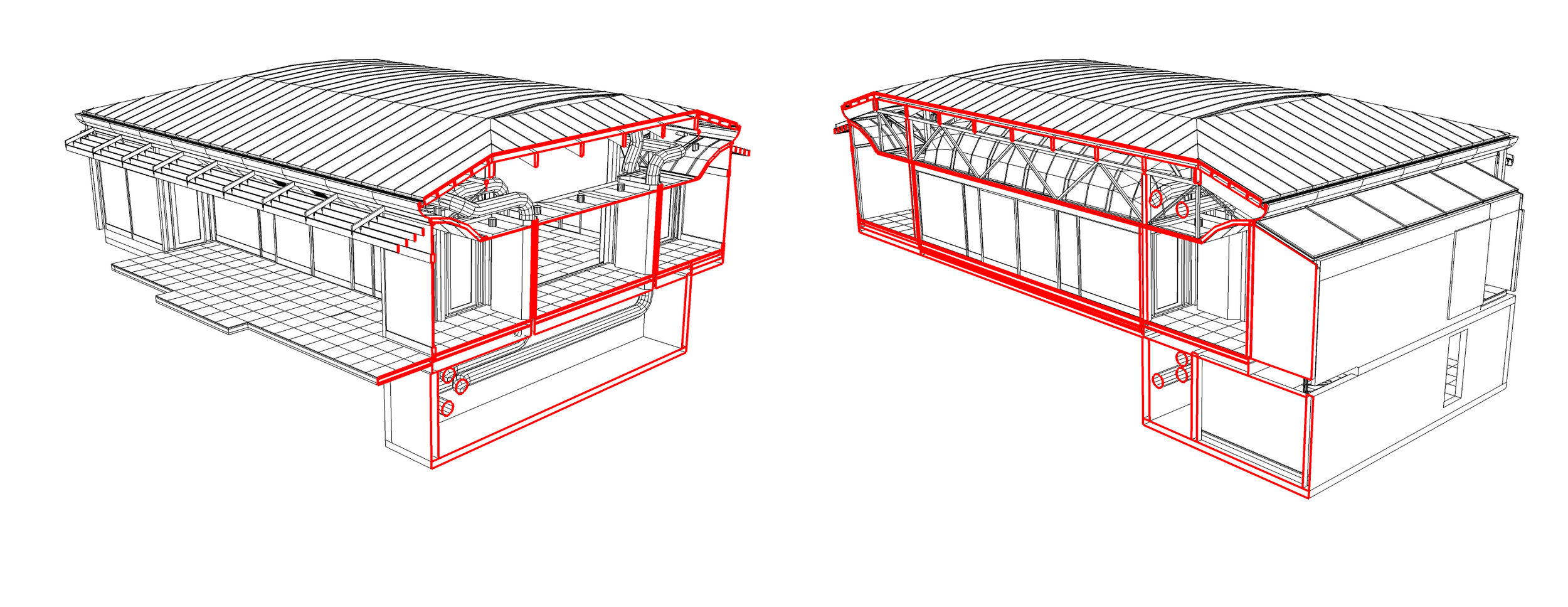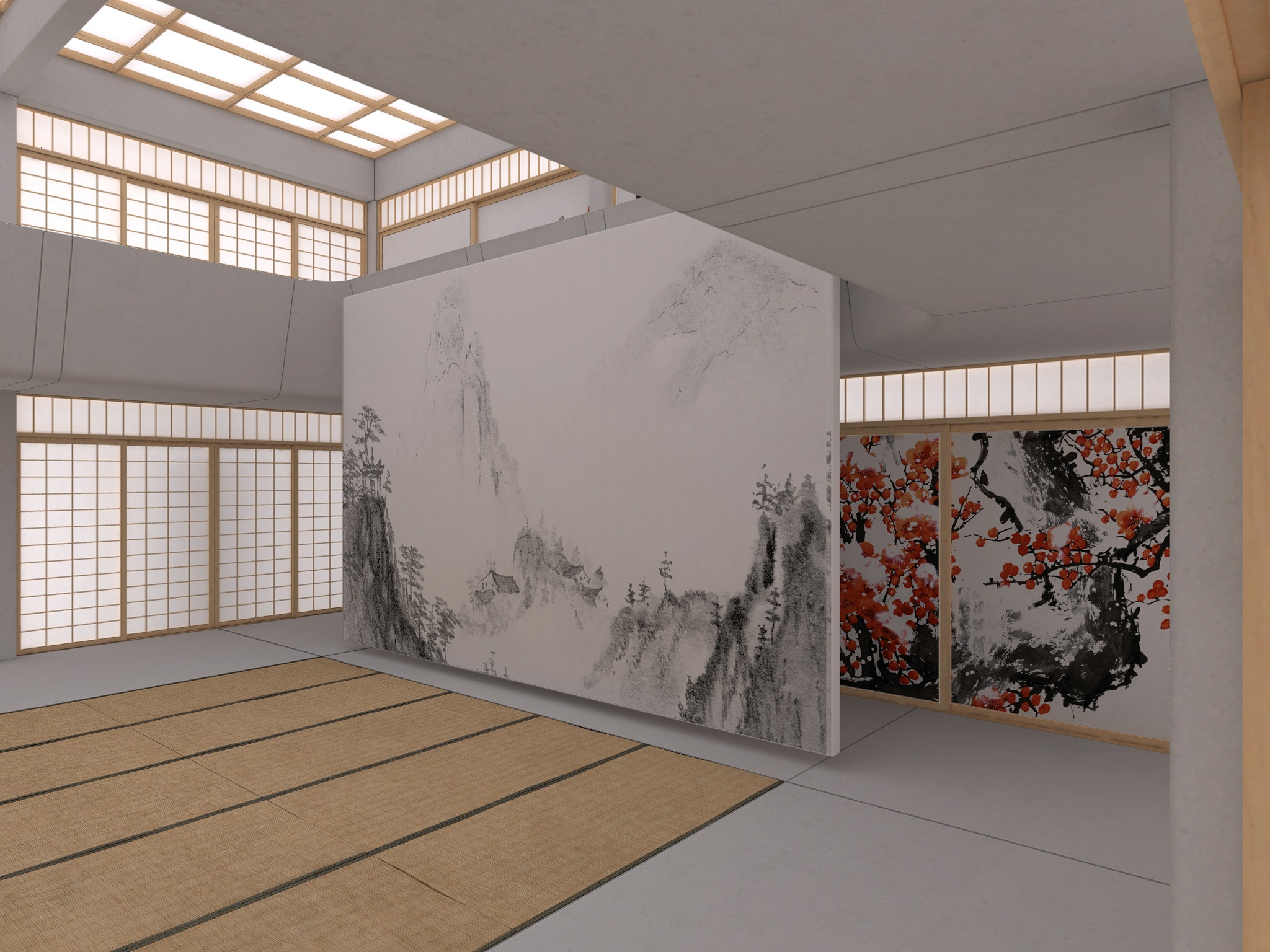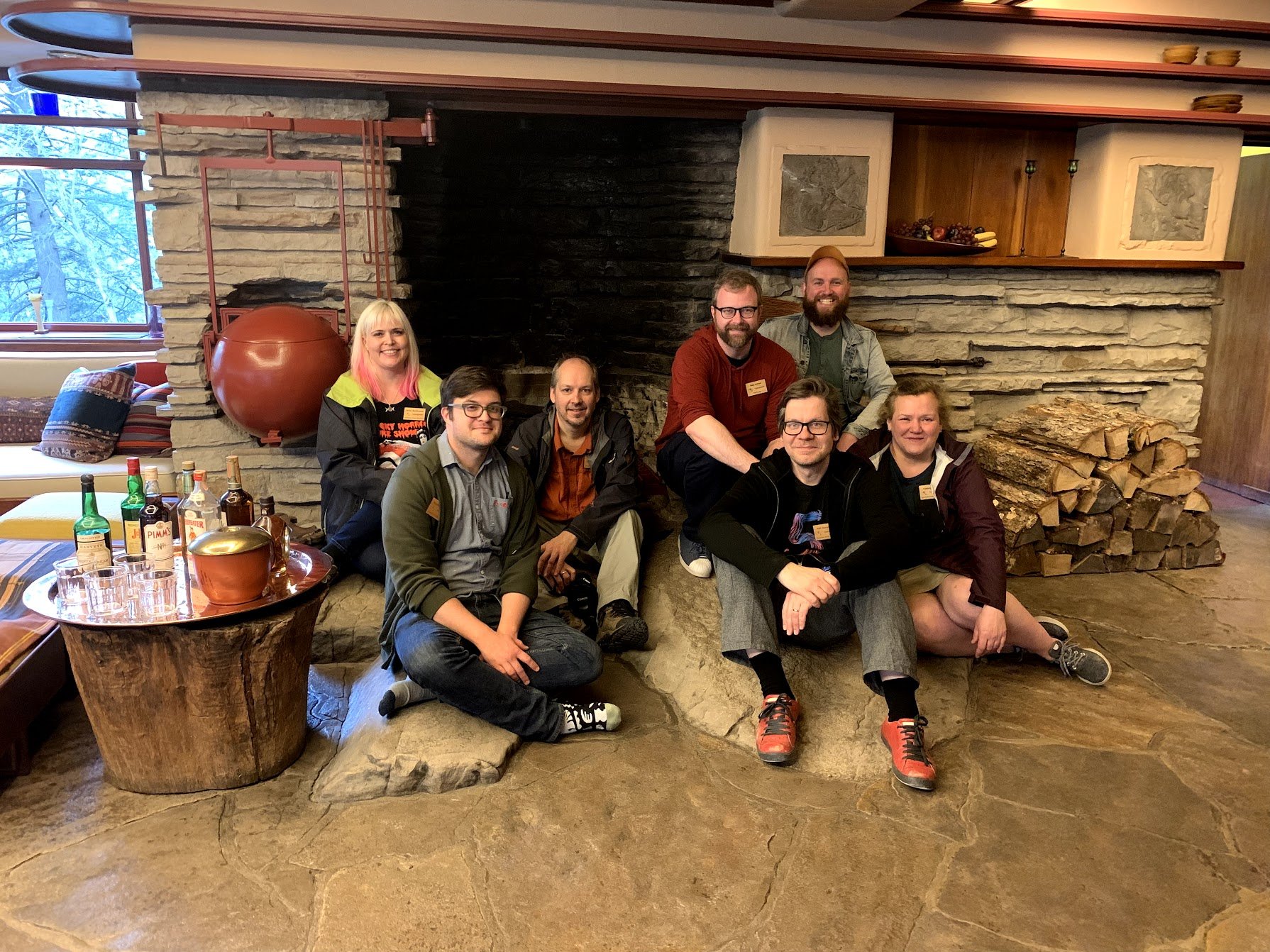Death makes you wonder
I guess most people think about their own mortality from time to time. It really hits home whenever a family member or friend passes, or if someone you knew that was still fairly young was suddenly taken away from their loved ones. When this happens you start thinking about all sorts of things. Like what you have really accomplished in life, and what are to be done with the things on your short or long list which you still haven’t managed to get to, and which of those things you may never get to experience. Places to go, people to meet, food to eat and architecture to embody. Stuff like that.
A magical childhood
As a kid I grew up in an amazing house designed by my architect father Hans-Kjell Larsen and at times I roamed that house in funky clothes created by my cool fashion designer mother Julie Baumann Larsen. I spent formative years gazing at architecture blueprints, going to construction sites that later become finished buildings, then creating my own designs and architecture in drawings and with LEGO, sometimes in collaboration with my sister Sarah.
The house was unusual in many ways. Entirely clad in red wood panel, with a slanted large skylight on the roof it was dubbed the UFO by many passers by. On the main floor, a large open space in the middle of the house hugged a huge rectangular chimney and fireplace. The whole house was an homage to the architecture of Frank Lloyd Wright. Apart from the front door all others were sliding ones, in practice creating a large seamless futuristic space that we kids would roam. The large natural garden outside seemed to gently flow inside through huge, floor to ceiling windows and glass sliding doors. I sometimes wonder how much this house I grew up in made me who I am today. If environmental psychologists are to be believed, it made a big contribution.
Studying the masters
Later, as an architecture student, I studying the designs of many great architects. People like Frank Lloyd Wright, Le Corbusier, Louis Kahn, Tadao Ando, and very much later (much to my regret) Antoni Gaudi to name a few. The designs of these architects resonated with me then, and still continues to inspire me.
Scan of blueprint of Voksenaasen hotel from 1959 showing the iconic section which enabled the building to negotiate the steep terrain of the site. Drawn by the architects Hans-Kjell Larsen and Terje Thorstensen.
I am obviously biased but I do believe my dad was an extraordinary architect. Having barely finished architecture school, he won the competition for the Norwegian national gift to Sweden, the Voksenaasen hotel, in 1958. It had a neo-functionalist character as a response to a more modern time, in contrast to the more traditional concepts of the other much more renown, established architects. This project was to follow him for more than 50 years through numerous extensions and upgrades. As an newly graduated architect I was lucky to help him with a few of the extensions, first with an architectural visualization in 1996 that was so realistic the owner mistook it for a photograph, and then later, in 2006 by creating a 3D model and construction drawings of the Dag Hammarskjöld pavillion, crucial for the engineers on the team to understand the complex curved wood panel ceiling design.
3D CAD model of the Dag Hammarskjöld pavillion at Voksenaasen hotel.
Love for architectural travel
Throughout my adult life I have loved traveling the world and have visited some of the buildings of the grand masters of architecture, and many cities created by a host of other architects and urban designers. Cities like Dubrovnic, Praha, Berlin, London, New York, Los Angeles, Kyoto and Tokyo and many more places.
I have also traveled and spent considerable time in many virtual spaces, created by myself and by many other game designers, artists, developers and architects like Samuel Arsenault-Brassard, the creator of the Museum of Other Realities. There have been concerts by Jean Michel Jarre in The Wave, clubbing and theater experiences in VRChat and The Under Presents, stand-up comedy in Sansar, and conferences in AltspaceVR to name but a few. Then add the thousands of hours I have spent with friends in too many first and third person multi-user online games to mention.
The virtual architectural space and dojo “I Know Kung Fu” I designed for HoloCap which now resides in VRChat.
Alone and with friends and family I have put my body into many architectural spaces of immense power and beauty, physical and virtual, and those experiences surely have shaped me somehow into the human being I am today.
The power of design
By far the most powerful architectural experience I have had yet was visiting Fallingwater, the iconic 1935 house for the Kaufmann family in Laurel Highlands of southwest Pennsylvania, designed by architect Frank Lloyd Wright. My visit there was no ordinary tourist trip. In February 2019 I was accepted into their special Immersive Design Residency Program, and together with a small group of other immersive design professionals, I spent a week living nearby with evenings at Fallingwater with the whole house to ourselves. Wright was fascinated with the architecture of Japan, and in Fallingwater one can see this connection as a home and a building seen as one with nature. My stay there was magical, and I felt deeply connected to nature by way of the architecture.
The 2019 cohort of the Immersive Design Residency Program at Fallingwater led by Residency Instructor Doug North Cook, Professor at Chatham University.
The enemies of architecture
With every passing second gravity, rain, oxygen, pollution, wind and the constant wear and tear of surfaces touched by humans will ensure that any architectural space and even whole cities will disappear into history, unless they are being constantly repaired and renewed. As a home owner this is something everyone can relate to. Yet even some of the most majestic buildings of the past are today only ruins; huge buildings like the pyramids of Egypt and the Mayan civilization, the Colosseum in Rome and many other places.
The costs for keeping Fallingwater alive as a living museum in 2023 for anyone to visit must be in the millions of dollars every year. There is an endless need for repairs and upkeep and there are guides and guards. Not everyone has the finances or ability to keep a building like Fallingwater alive, but then again not all buildings are worth saving.
Fallingwater captured in the spring of 2019 by yours truly.
The death of digital spaces
There is no weather in a virtual reality, so surely digital buildings and environments can’t decay? In computer science data degradation is the gradual corruption of computer data due to an accumulation of non-critical failures in a data storage device. It is also known as data rot. While it can be a problem, loss of hardware for reading digital storage is probably more of a challenge. Remember floppy disks?
Neither of these issues are the cause of what looks to be a coming avalanche of death of digital spaces. The problem is the shutting down of servers where these virtual spaces have resided for years. These shut downs are due to the services, games, or experiences no longer being profitable or desirable from a business point of view.
The digital places that are becoming lost range from social VR game spaces like Echo VR with tens of thousands of players, to social VR platforms such as AltspaceVR that had more than a hundred thousand users, and the stellar and unique music VR platform TheWave. Lately much more personal spaces are suffering the same fate where Meta is literally evicting thousands of PC VR users from their customized Oculus Homes, some of whom having spent years customizing their spaces.
Museum of Other Realities designed by architect Samuel Arsenault-Brassard is one of the virtual social architectural spaces I hope will be conserved for the future. It is host to many digital works of art and is a work of art in itself.
Since all of these virtual spaces are privately owned by corporations this effectively gives them the power of law over the regulation of the majority of the worlds' virtual spaces and as such, society as a whole stands to be a mere bystander as these corporations delete important digital cultural artifacts from our digital heritage.
Today there are no obvious ways for museums, governments or private persons to save or keep these types of virtual spaces alive for future generations. Many of these virtual spaces will have been the sources of fabulous events, will have generated powerful memories and will have meant a lot to many people. Not very much different from what has taken place in many brick and mortar spaces of the analogue world.
The younger generations of today have spent countless hours forming friendships and playing in the virtual spaces of Fortnite, Roblox, Minecraft and other games and experiences. In a few years time, this will mean that a larger portion of the world will have spent considerable and formative time in digital spaces, and some of these older virtual architectural spaces will probably be considered classics, perhaps even comparable to the physical wonders of the world? It may be too late for these digital spaces to be saved if their servers have been shut down, access codes lost, and the full source code and systems not properly documented and maintained.
Computer History Museum
The greatest museum in the world to me is the Computer History Museum in Silicon Valley. Not because of its architecture, but because of all the amazing exhibits and computers in their collection. I have spent countless hours there and I try to visit it every time I travel to California.
While I do think that various art and architecture museums around the world should start to research and include virtual architecture in their collections, the Computer History Museum is the more immediate candidate for the preservation of a few virtual social spaces to ensure that they become part of computing history. CHM has the competency, they should have the interest and there should be enough patrons in and around Silicon Valley that may already be supporting the museum to make this happen.
Call to action
There are a few multi-millionaires and billionaires whose fortunes have been created in part by creating such virtual spaces. I think that they owe it to history and the world to support the conservation of a few of the more notable digital spaces created in recent years. That would both be spaces that are the direct results from their own enterprises but also some that were created by others with lesser financial success.
I hereby challenge Mark Zuckerberg of Meta, Tim Sweeney of Epic Games and Philip Rosedale of Linden Labs to pick up the mantle to start help conserving social digital spaces for future generations. Not only would I be open to contributing to an initiative to start conserving social digital spaces, I’d like to hear from others working in this space and willing to get this initiative underway.





